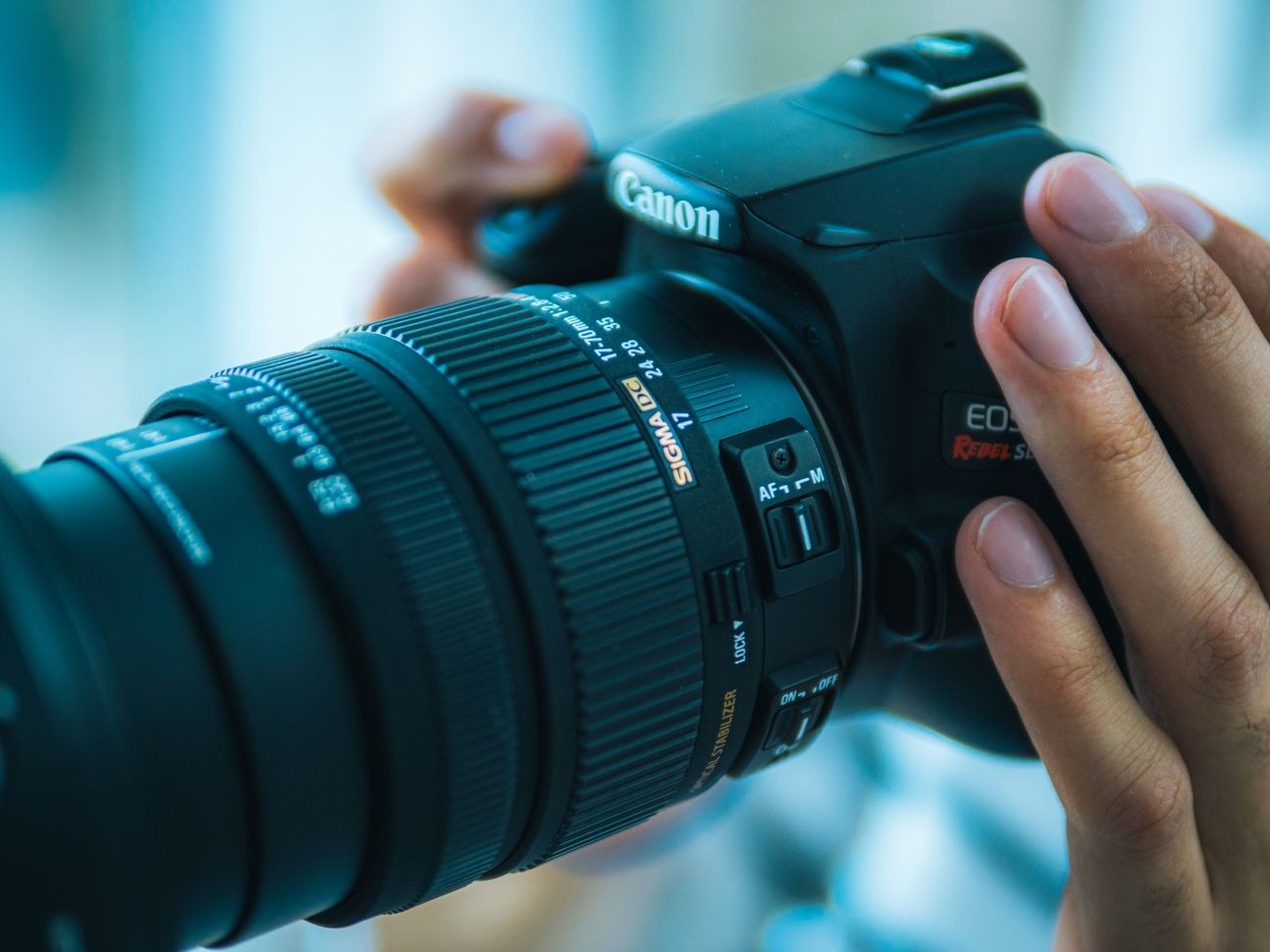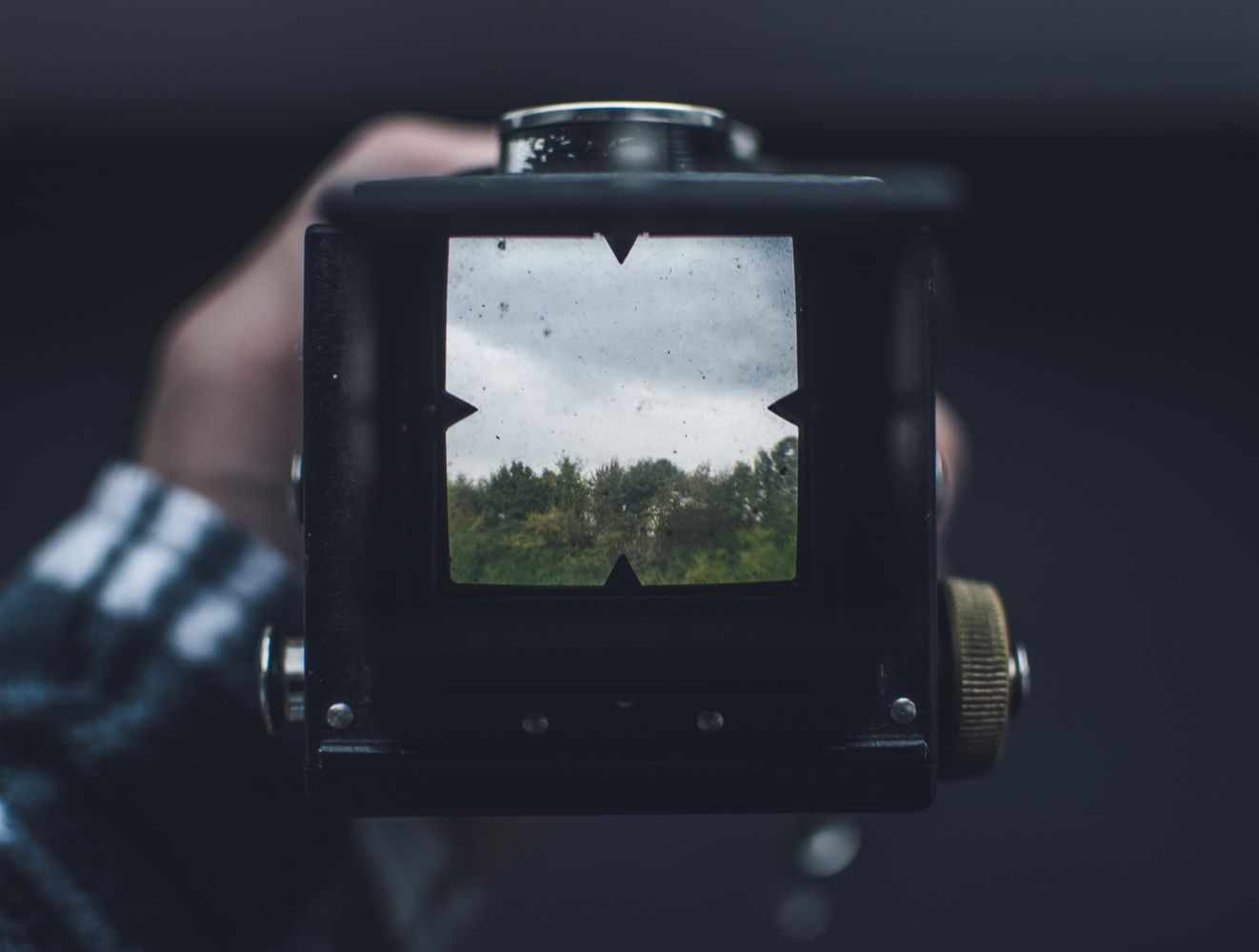Everything You Need to Know About Electronic Viewfinder: Pros & Cons
Rent film gear from local filmmakers.

Rent film gear from local filmmakers.
Digital cameras provide a variety of options for previewing images and capturing the perfect photo.
In this article, we go over the advantages and disadvantages of optical and electronic viewfinders, as well as whether or not you need one at all. If you're interested in learning more, keep reading!
And if you want to get the hang of photography equipment basics, consult this explanatory guide on must-have gear!
What is an electronic viewfinder?
An electronic viewfinder (EVF) is a camera viewfinder that projects the image taken by the lenses onto a tiny display using electronics. This screen's image is used to help focus the camera on the subject to be captured.
It is shorter and hidden from artificial light than a live preview screen, and it may also consume less electricity. The sensor captures the view via the lens, processes it, and then projects it onto a small display that can be viewed through the eyepiece.

3 benefits of an electronic viewfinder
1. Depth of field preview
An EVF can show you what your depth of focus will be, as it can show you what your brightness will be.
Many optical viewfinders have the lens apertures completely open, which doesn't give a good picture of what the depth of focus would be in the picture when you hit your camera release.
DSLRs have a "depth of field" zoom function that closes down the aperture to whatever you set it to – the problem is that if you're trying to shoot at smaller apertures, the intensity of field ensures its validity will make the whole thing look impractically dark through the viewfinder.
2. Exposure preview
An electronic viewfinder gives users a real-time preview of the exposures, so the intensity of the photo will match what you see through the EVF. It's impossible to overestimate how valuable this is.
A live brightness preview can assist you in dialing in the precise exposure you desire without any need for continuous chimping.
3. Focus distance display
It's useful to have when determining the right aperture for a scene, but it's not necessary.

3 downfalls of an electronic viewfinder
1. Drains the camera’s battery
Because you're powering a display, even if it's a small one, the power tends to drain faster. Buying more batteries is a simple solution.
2. In sunlight, an EVF might not be bright enough
When photographing in glorious sunlight, the EVF may well not be strong enough to see the image. This depends on the eyecup around the EVF just on cameras not whether you use eyeglasses.
3. Only works with the camera ON
With cameras switched off, you may glance via optical viewfinders.
Nevertheless, with an EVF, the lens must be switched on (because the camera's sensor must be gathering light data and then showing it on the small screen).
It can be aggravating to hold the camera up to take a picture, have it shut off or sleep, and then stare into a black EVF awaiting for just a picture to materialize!

What is an optical viewfinder?
An OVF bounces illumination through the lens and towards your eye using mirrors and a splitter.
This implies you could see everything in front of your cameras exactly like you're looking straight at it, without the little temporal lag that electronic viewfinders occasionally have.
What they won't show you is what the final picture would appear like, such as if you use the phone's auto presets and it makes modifications to compensate for low light conditions.
What is the difference between an electronic viewfinder and an optical viewfinder?
Optical viewfinders employ mirrors and prisms to portray the perspective of a scene.
Electronic viewfinders use a small electronic screen similar to the larger Display screen on the rear of all cameras.
It all boils down to what suits you and your needs as a photographer, as it does with many elements of cinematography. Some prefer an optical viewfinder for its analog absolute clarity, whereas others choose electronic viewfinders for their elevated features.
What counts most, at the end of the day, is that you utilize the appropriate instrument for the job.

Up next: What is a rolling shutter
Hope this article gave you some good insights about viewfinders. Our next stop is the rolling shutter!
Discover what it is, how it affects the quality of your images and 3 ways to avoid the rolling shutter effect.
What is an electronic viewfinder?
An electronic viewfinder (EVF) is a camera viewfinder that projects the image taken by the lenses onto a tiny display using electronics.
Why use an electronic viewfinder?
In comparison to an LCD, the scene seems considerably larger in a viewfinder, providing a better idea of how your image will appear, improving your capability to frame, and so on.
Are electronic viewfinders good?
Yes, they enable you to shoot good scenes.
Do DSLRs have an electronic viewfinder?
Yes, DSLR cameras have an electronic viewfinder.























